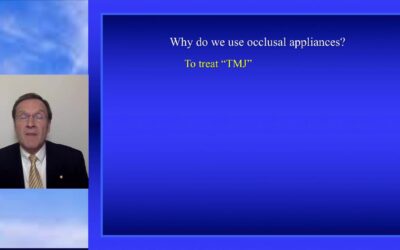Duration: 47 minutes, 10 seconds
Author: Dr. Bobby Butler
YSGG Laser Precision in Periodontal Plastic Surgery
Introduction
Periodontists are highly trained dental professionals who specialize in the prevention, diagnosis, and treatment of gum diseases and other periodontal conditions. Despite their expertise, it is interesting to note that periodontists have been relatively slow to embrace the use of lasers in their surgical procedures. In this article, we will delve into this topic and explore the benefits of utilizing the iridium chromium YSGG laser in aesthetic crown lengthening procedures and the potential applications in pocket therapy and debriding.
1. The Reluctance to Adopt Laser Technology
Dr. Bobby Butler, a reputable periodontist, acknowledges the initial hesitancy among periodontists in incorporating laser technology into their practices. This conservative approach may stem from a variety of reasons, such as the lack of familiarity with laser equipment and concerns about safety and efficacy.
1.1 The Learning Curve
One of the primary reasons for the slow adoption of lasers in periodontal surgery is the learning curve associated with utilizing this advanced tool. Periodontists have spent years honing their skills with traditional instruments, and transitioning to a new technology requires time and patience to master.
1.2 Safety Concerns
Another factor contributing to the reluctance is safety concerns. As with any new medical device, there is always a need for thorough research and clinical trials to establish the safety protocols and standards when using lasers in surgery. This cautious approach helps to ensure patient well-being and safeguard against potential complications.
2. The Benefits of YSGG Laser in Aesthetic Crown Lengthening
Dr. Butler highlights the specific advantages of using the iridium chromium YSGG laser in aesthetic crown lengthening procedures, which involve removing gum tissue to expose more of the tooth’s surface. These benefits include:
2.1 Precise and Minimally Invasive
The YSGG laser offers precise and minimally invasive incisions, allowing periodontists to perform crown lengthening procedures with greater accuracy and control. This results in predictable outcomes while minimizing trauma and discomfort for the patient.
2.2 Reduced Healing Time
Compared to traditional surgical methods, the YSGG laser promotes faster healing due to its ability to seal blood vessels and nerve endings. This results in reduced post-operative pain and swelling, allowing patients to recover more quickly and comfortably.
2.3 Improved Aesthetic Results
By utilizing the YSGG laser, periodontists can achieve improved aesthetic results in crown lengthening procedures. The laser’s precision enables a more controlled removal of gum tissue, ensuring optimal symmetry and contouring for an aesthetically pleasing smile.
3. Ongoing Research: Lasers in Pocket Therapy and Debriding
While the benefits of YSGG laser in aesthetic crown lengthening are well-documented, Dr. Butler mentions that ongoing research is being conducted on the effectiveness of lasers in pocket therapy and debriding.
3.1 Pocket Therapy
Pockets, formed as a result of gum disease, can harbor bacteria and plaque, leading to further oral health complications. Preliminary studies suggest that lasers may effectively remove debris and bacteria from these pockets, providing a more thorough cleaning compared to traditional methods. However, more robust evidence is needed to establish the long-term effectiveness and safety of pocket therapy using lasers.
3.2 Debriding
Debriding involves removing diseased tissue from the gum area. There is ongoing research exploring the potential of lasers in debriding, as they may offer a less invasive alternative to traditional mechanical instruments. While initial results look promising, further research is needed to validate the long-term efficacy and safety of laser debriding techniques.
Conclusion
In conclusion, the field of periodontal plastic surgery has seen remarkable advancements with the introduction of lasers. Although periodontists were initially cautious about incorporating laser technology into their practice, the benefits are becoming increasingly apparent. The use of the iridium chromium YSGG laser in aesthetic crown lengthening procedures has shown great promise in delivering precise, minimally invasive, and aesthetically pleasing results. Furthermore, ongoing research on the applications of laser technology in pocket therapy and debriding may revolutionize how periodontal diseases are treated in the future.
FAQs
1. Are there any risks associated with laser periodontal surgery?
While laser periodontal surgery is generally safe, like any medical procedure, there are potential risks. These can include sensitivity, bleeding, infection, or the need for additional treatments. It is essential to consult with a qualified periodontist to assess your individual situation and discuss any potential risks.
2. How long does it take to recover from aesthetic crown lengthening with the YSGG laser?
Compared to traditional surgical methods, recovery time is typically shorter with the YSGG laser due to reduced post-operative pain and swelling. However, specific recovery times can vary depending on individual circumstances. Your periodontist will provide detailed post-operative instructions and guidelines for a smooth recovery process.
3. Can lasers completely replace traditional surgical instruments in periodontology?
While lasers offer numerous advantages, they cannot completely replace traditional surgical instruments in all periodontal procedures. Traditional instruments still play a crucial role in many aspects of periodontology, and their combination with laser technology can provide the best results. Your periodontist will determine the most appropriate treatment approach for your specific needs.
4. Is laser periodontal surgery covered by insurance?
Insurance coverage for laser periodontal surgery varies depending on your specific insurance provider and policy. It is advisable to consult with your insurance company to understand the extent of coverage for periodontal procedures and whether laser surgery is included.
5. How can I find a periodontist who specializes in laser periodontal surgery?
To find a periodontist who specializes in laser periodontal surgery, you can start by consulting with your regular dentist for recommendations. Additionally, professional organizations such as the American Academy of Periodontology can provide a list of certified periodontists in your area who are experienced in laser-assisted procedures.





Add comment